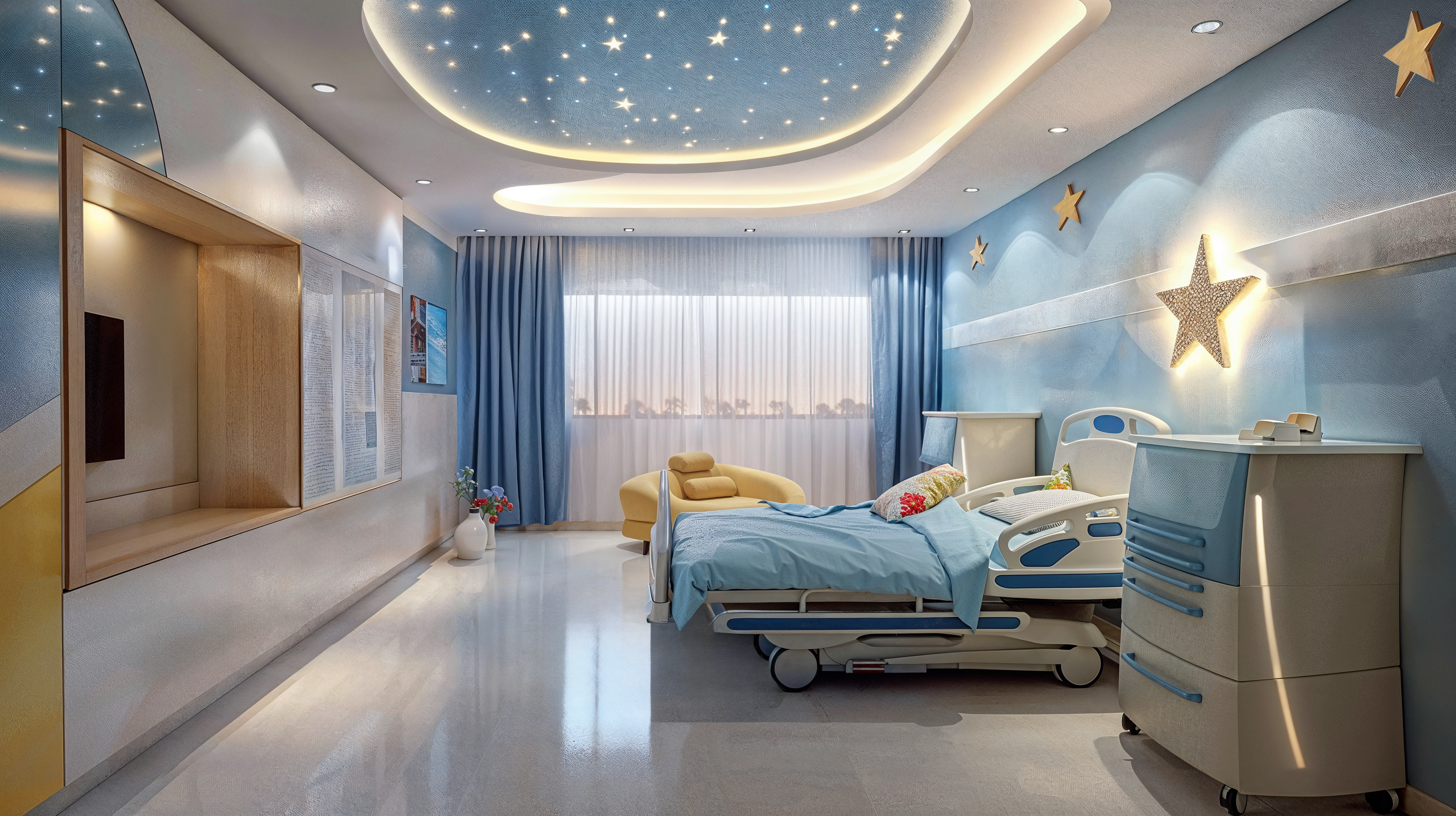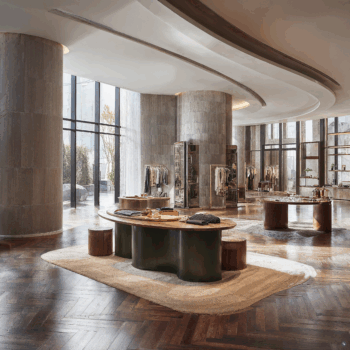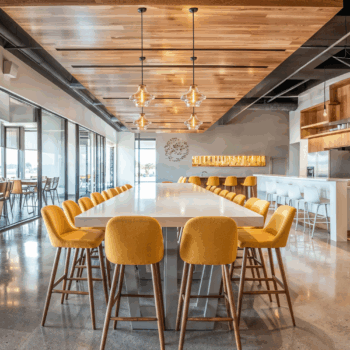
Healthcare environments can often feel overwhelming, especially for young patients. Pediatric healthcare facilities that embrace child-centric design prioritize comfort, creativity, and a sense of security—transforming clinical spaces into nurturing environments that support both physical healing and emotional well-being. By integrating engaging aesthetics, thoughtful spatial planning, and sensory-friendly elements, these spaces create a more positive healthcare experience for children and their families.
For children, a medical setting can be unfamiliar and intimidating. Vibrant colors, playful patterns, and interactive design elements help create a welcoming atmosphere that eases anxiety and fosters a sense of normalcy. Murals, themed environments, and engaging graphics introduce a sense of storytelling, turning waiting rooms and patient areas into immersive, uplifting spaces.
Furniture also plays a crucial role in child-centric design. Scaled-down seating, rounded edges, and ergonomic considerations ensure that furnishings are both accessible and safe for young users. Modular seating and flexible arrangements provide comfortable spaces for families to remain close, reinforcing a sense of support throughout the healthcare journey.
Incorporating biophilic elements—such as nature-inspired motifs, daylight, and tactile materials—enhances sensory experiences while promoting healing. Large windows, skylights, and light-filtering materials maximize access to natural light, creating a brighter, more uplifting environment. Materials with warm, natural textures—like wood paneling, soft textiles, and stone accents—help reduce the sterile feel of a clinical setting, making spaces feel more approachable and soothing.
Tactile engagement is another key factor in pediatric design. Textured walls, interactive surfaces, and sensory play areas give children opportunities for exploration and distraction, offering comfort during stressful moments. Elements such as water features, indoor gardens, and digital interactive walls introduce movement and curiosity, shifting the focus away from medical procedures and toward positive engagement.
Child-centric healthcare design extends beyond aesthetics—it also considers emotional and social well-being. Dedicated zones for play, creative expression, and family interaction provide essential outlets for stress relief and comfort. Play areas designed with safe, non-toxic materials allow children to engage in developmentally appropriate activities, helping them feel at ease while waiting or recovering.
Family-friendly spaces are equally important. Comfortable lounge areas, private nooks, and designated quiet zones allow caregivers to rest while remaining present. Providing areas where parents and guardians can engage with their child—whether through storytelling, creative activities, or simple quiet time—reinforces emotional security in an otherwise unfamiliar setting.
Child-centric design in pediatric healthcare facilities represents a shift toward more empathetic, holistic environments that prioritize both medical care and emotional support. By integrating playful aesthetics, nature-driven elements, and thoughtfully designed spaces, designers can craft healthcare environments that feel less clinical and more compassionate. These spaces don’t just provide treatment—they foster comfort, imagination, and resilience, ultimately transforming the healthcare experience into a more positive journey for young patients and their families.
Check out other family-friendly spaces with our article on Posh Playrooms.







